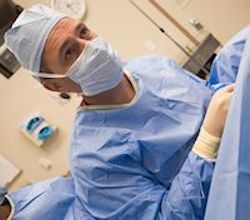Employer Responsibilities
- Ensure employees wear appropriate personal protective equipment (PPE), gloves, gowns, and face masks, when anticipating blood or OPIM exposure [29 CFR 1910.1030(d)(3)(i)].

Employers are responsible for providing proper personal protective equipment.
- Ensure employees discard contaminated needles and other sharp instruments immediately, or as soon as feasible, after use into appropriate containers [29 CFR 1910.1030(d)(4)(iii)(A)(1)]
- Provide in their exposure control plan documentation of consideration and implementation of appropriate commercially available and effective engineering controls designed to eliminate or minimize exposure to blood and OPIM.
- Practice Universal Precautions: Treat all blood and other potentially infectious body fluids as if they are infected and take appropriate precautions to avoid contact with these materials [29 CFR 1910.1030(d)(1)].
- The Bloodborne Pathogens Standard does allow hospitals to practice acceptable alternatives to Universal Precautions such as Standard Precautions or Body Substance Isolation.
- The Revised Bloodborne Pathogen Standard requires needlestick/sharps injuries be recorded on a Sharps Injury Log 29 CFR 1910.1030(h)(5). The sharps injury log must be established and maintained and the confidentiality of the injured employee must be protected.
- Follow-up area for needlestick injuries and/or exposure incidents: The Bloodborne Pathogens Standard 29 CFR 1910.1030(f)(3) requires the employer to make immediately available a confidential medical evaluation and follow-up to an employee reporting an exposure incident. This follow-up often occurs in the emergency department.
Knowledge Check Choose the best answer for the question.
1-2. What does it mean when workers practice universal safety precautions?
You forgot to answer the question!
